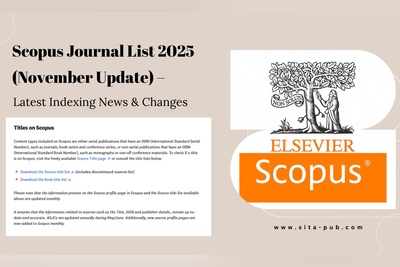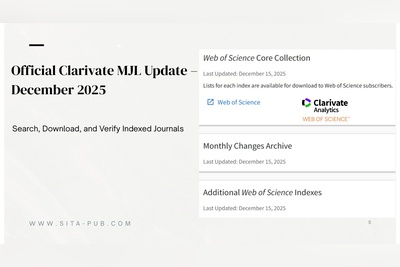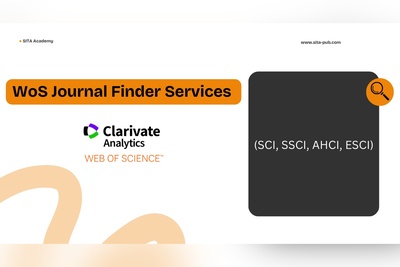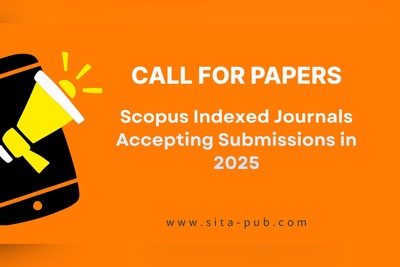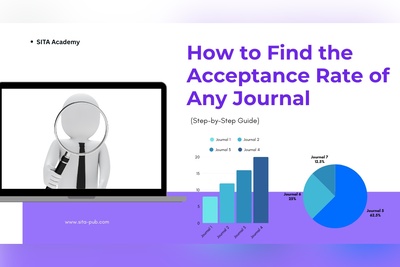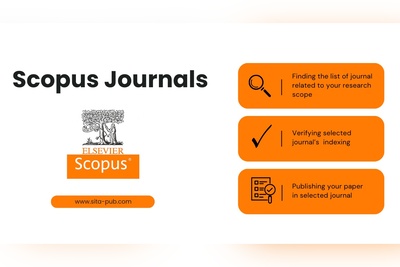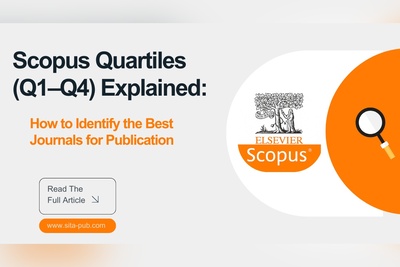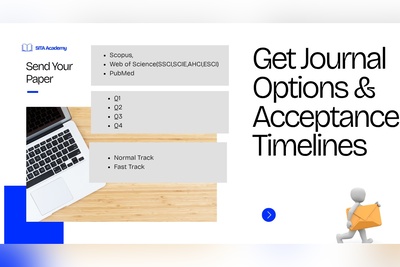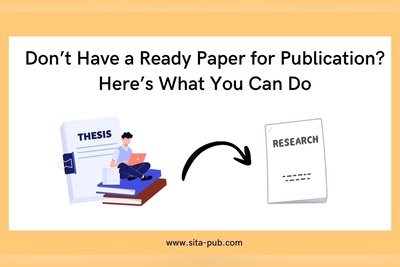Expert Checklist for Fast and Easy Research Paper Submission
Research paper submission to international Scopus, ISI, and PubMed journals can be done easily and quickly if you follow the expert checklists provided in this article. Proper submission preparation increases your chances of acceptance in high-impact journals.

Submitting a research paper to a journal—especially one indexed in Scopus, ISI, or PubMed—can feel overwhelming. But with the right checklists in place, the process can be faster, smoother, and much less stressful. This article presents a comprehensive, expert-curated set of checklists to help researchers at any stage ensure a successful, quick, and efficient submission.
Whether you're submitting for the first time or are an experienced academic, use this guide to avoid rejections, delays, or formatting issues.
1. Journal Selection Checklist
Choosing the right journal is the first and most important step. It affects your acceptance rate, visibility, and publication speed.
Use this checklist to make an informed selection:
✅ Scope Match: Does the journal’s scope align with your research topic?
✅ Indexing: Is it indexed in Scopus, ISI (Web of Science), or PubMed?
✅ Acceptance Rate: Prefer journals with moderate to high acceptance rates if you're looking for faster publication.
✅ Impact Factor: Check the journal’s impact factor or Scimago Journal Rank (SJR).
✅ Submission to Decision Time: Look for journals that mention fast peer review timelines.
✅ Open Access or Subscription?: Consider the pros and cons (visibility vs. fees).
✅Publication Charges: Are there article processing charges (APCs)? Are they within your budget?
✅ Author Guidelines Availability: Is the journal clear about submission formatting and policies?
✅ Reputation and Credibility: Avoid predatory journals by checking if the journal is listed on the DOAJ, Scopus, or Clarivate.
2. Document Preparation Checklist
A paper might be scientifically sound but still get rejected due to poor formatting, missing components, or incomplete files.
Use this checklist to ensure all required files are ready:
✅ Main Manuscript File: With clear headings, line numbering, and structured sections (Abstract, Introduction, Methods, Results, etc.).
✅ Title Page: Separate document with title, author names, affiliations, corresponding author info.
✅ Abstract and Keywords: Ensure the abstract is within the word limit and keywords are relevant.
✅ Figures and Tables: High-resolution images with proper captions, numbered consistently.
✅ References: Formatted according to the journal’s style (APA, Vancouver, etc.).
✅ Cover Letter: Personalized to the journal, explaining the significance of your work.
✅ Conflict of Interest Statement: Disclosed in the manuscript or as a separate file.
✅ Ethical Approval Documents: Required for research involving humans or animals.
✅ Plagiarism Check Report: Use tools like Turnitin or iThenticate before submission.
✅ Proofreading Done: Have a native speaker or editor review the manuscript.
✅ Permissions and Licensing: For any third-party figures, datasets, or extended reuse.
3. Scientific Quality Checklist
Scientific merit is non-negotiable. Journals reject papers that lack originality, clarity, or depth.
Here’s how to ensure your research is strong enough:
✅ Novelty: Does your paper present something new—not just a repetition of known results?
✅ Research Gap: Have you clearly defined what problem your research is solving?
✅ Strong Methodology: Are your methods reproducible and well-described?
✅ Data Validity: Is your data accurate, properly collected, and well-analyzed?
✅ Critical Discussion: Have you interpreted your results with relevant literature comparisons?
✅ Conclusion Based on Results: Avoid overstatements not backed by evidence.
✅ Future Work: Mention potential extensions or applications of your findings.
✅ References to Core Literature: Avoid citing only weak or unrelated sources.
✅ Acknowledgment of Limitations: Journals appreciate transparency about study weaknesses.
4. Technical Quality Checklist
Beyond content, journals judge papers based on technical clarity and presentation quality.
Use this checklist to polish your manuscript:
✅ Language & Grammar: Use formal, concise, and correct academic English.
✅ Consistency: Uniform style for headings, fonts, spacing, and figure/table formats.
✅ Spelling & Punctuation: Use language tools and professional proofreading.
✅ Logical Flow: Smooth transitions between sections and paragraphs.
✅ Avoid Repetition: Remove duplicate points or redundant phrases.
✅ Structured Abstract: Use the IMRAD format (Introduction, Methods, Results, and Discussion) if required.
✅ Referencing Tools: Use software like EndNote, Mendeley, or Zotero to manage citations.
✅ Check for Journal Template: Use the official format if the journal provides one.
✅ File Types: Convert all necessary documents to required formats (PDF, DOCX, TIFF, etc.).
5. Fast and Easy Submission Checklist
Once the paper is ready, how do you make the submission process itself smooth and quick?
Follow these final steps:
✅ Register at Journal Website: Create an author account before starting.
✅ Check Submission System: Most journals use systems like ScholarOne or Editorial Manager.
✅ Follow Submission Steps Carefully: Upload files, enter metadata, and confirm author contributions.
✅ Check for Errors: Preview every uploaded file to ensure correct formatting.
✅ Include Suggested Reviewers: Many journals allow or require suggestions.
✅ Double-Check Author Information: Affiliations, emails, and ORCID IDs should be accurate.
✅ Final Plagiarism Check: Ensure similarity is below the accepted threshold.
✅ Track Submission: After submitting, regularly check your email and portal for updates.
✅ Respond Quickly to Revisions: For fast publication, submit revised files without delay.
✅ Keep Copies of Everything: Maintain backups of all submitted files and correspondence.
Pro Tips for Faster Acceptance
To further increase your chances of quick publication:
Choose journals known for fast decisions.
Avoid rejections by strictly following author guidelines.
Consider professional editing or translation services if needed.
Respond quickly to reviewer comments and revisions.
Include a compelling cover letter that summarizes the novelty of your work.
Final Thoughts
Getting your paper published doesn’t have to be slow or difficult. With these checklists, you can avoid the most common mistakes and submit your research efficiently and confidently.
Remember, successful publication depends not just on the quality of your research—but also on how well you prepare and present it.
Scientific Paper Publication Assistance at SITA Academy
Journal selection, document preparation, and technical quality checks are among the most critical steps in the research paper submission process. These elements must be handled with great care and attention to detail, as they directly influence your chances of successful publication in top-tier journals.
However, we understand that these tasks take time — and time is a luxury many researchers don’t have.
That’s where SITA Academy comes in.
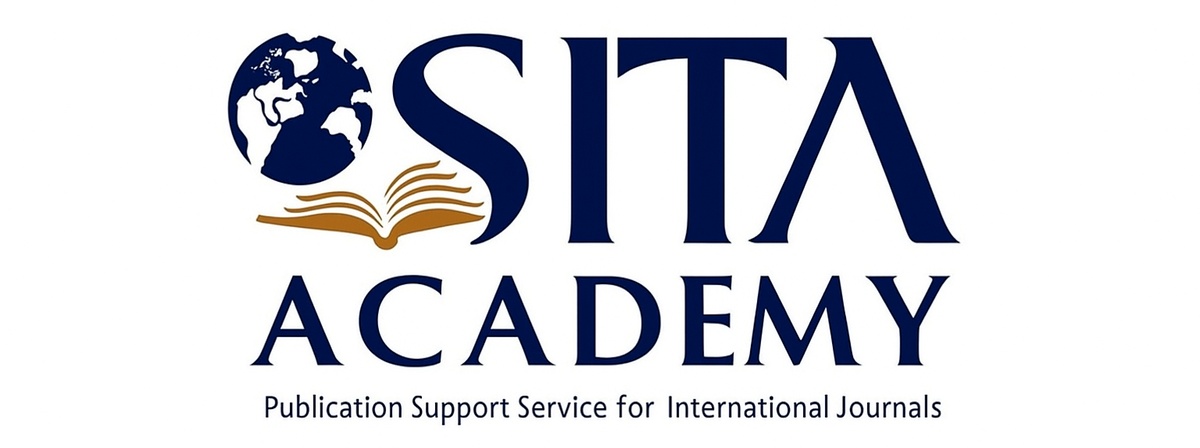
We offer a range of expert services to help you save time and publish with confidence. Our team can:
Help you identify the most suitable journal (Scopus, ISI, or PubMed indexed) based on your field, topic, and goals
Prepare and format all required documents according to each journal's specific submission guidelines
Review and improve the technical quality of your manuscript to meet international academic standards
Send us your research paper today through the contact channels below, and we’ll provide a detailed assessment and recommend the best-fit journals for your work.
Verified Contact Channels
If you have any questions, inquiries, or would like to learn more about our services, please don't hesitate to reach out to us. Our dedicated team is ready to assist you.





